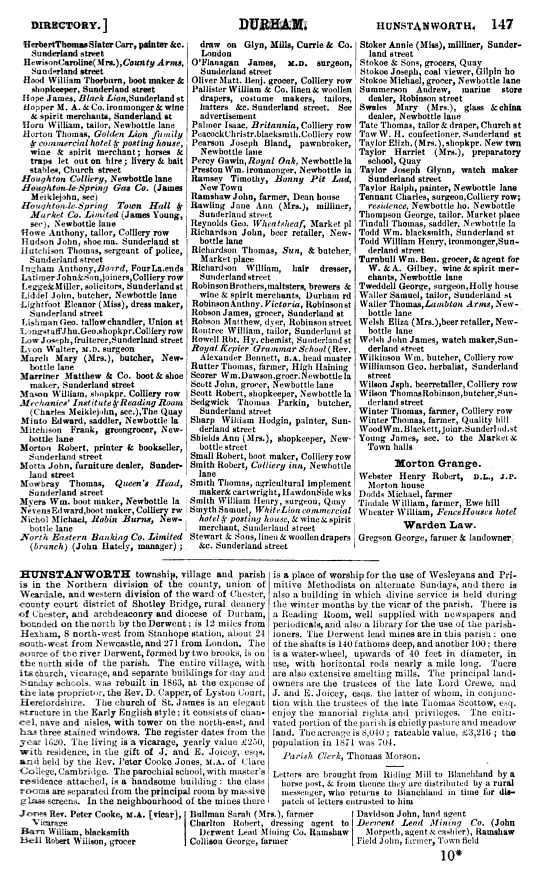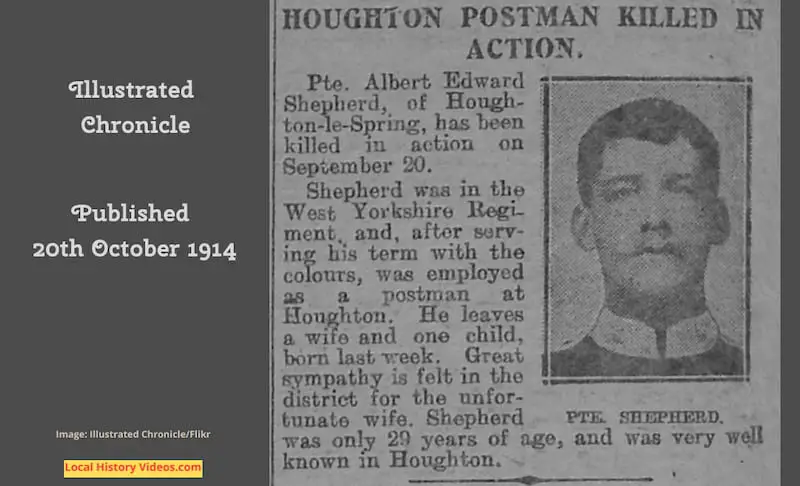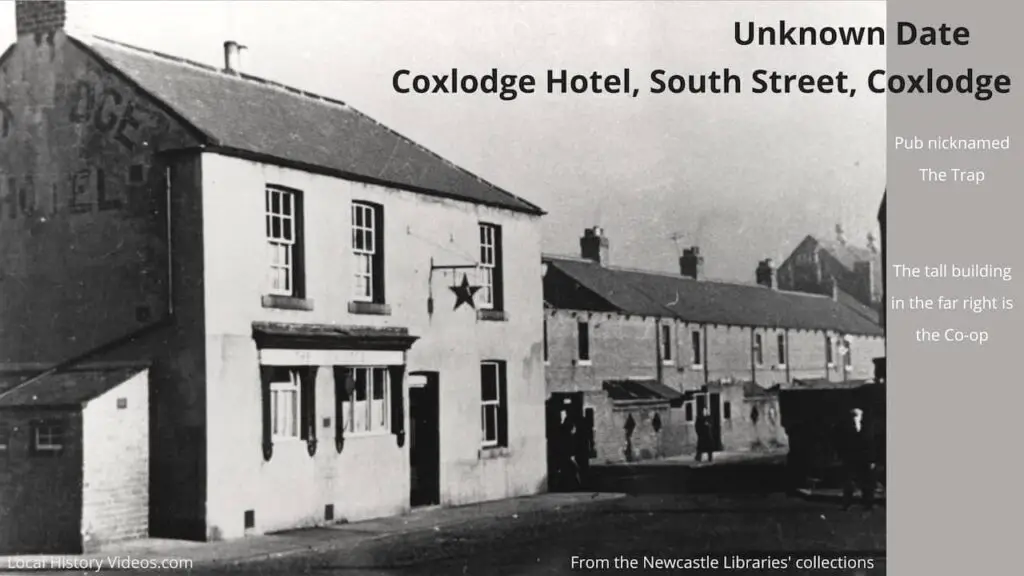Glimpse history through old images of Houghton-le-Spring, in North East England.
Miners Parade 1927
This archive film from 1927 shows men, women and dressed-up children, plus a brass band, processing through the street, holding the banners up high.
The event is watched by spectators on both sides of the road. There’s also a horse and cart parked up by the side of the road.
As the parade comes to an end, you can see the motor vehicles following behind.
Then there are speeches in the park, followed by a close look at one little girl’s outfit.
Miners Annual Demonstration At Houghton Le Spring (1927) – British Pathé on YouTube
St Michael’s and All Angels Church
Houghton-le-Spring is home to the ancient church of St Michael’s and All Angels. Excavations in 2008 revealed a Saxon doorway and walls, but even half of the current standing structure was in place by the end of the 1300s. The church has a late 12th and early 13th-century chancel, with a primarily 14th-century nave. Victorians added the north wall and roof.
Archaeologists suspect the remains of a Roman temple may lie under the chancel. And the presence of a whinstone boulder raises the possibility that this site may once have been used for Neolithic worship.
Bernard Gilmpin
Bernard Gilpin (1517 – 4 March 1583), was an Oxford theologian and then became a Church of England clergyman during the reign of Henry VIII. During his lifetime was known as the ‘Apostle of the North’ for his work in the wilds of northern England, frequently travelling from the church of St Michael’s and All Angels to the most neglected parts of Northumberland, Yorkshire, Cheshire, Westmorland and Cumberland.
He spent the majority of Queen Mary’s reign in Leuven, Antwerp and Paris. On his return to England he was vocal against clerical vices, leading to accusations. His mother’s uncle, Cuthbert Tunstall, bishop of Durham, protected him and appointed him rector of the parish of Houghton-le-Spring in 1557. It was a good living, with a house which was better than many bishops palaces, and his new position was that of a clerical magnate.
The accusations continued, and Gilpin travelled to London with a special long garment for martyrdom. He broke his leg on the journey, which delayed his arrival. It coincided with the death of the Catholic Queen Mary, so he was free to return to Houghton-le-Spring.
Bernard Gilpin welcomed any traveller and their horses to his home. Every fortnight the household used forty bushels of corn, twenty bushels of malt and an ox, with large quantities of other provisions too.
Part of his home became a boarding establishment to meet the high demand for extra accommodation at the grammar school he had built and endowed at a cost of more than £500, a small fortune for the time.
Bernard Gilpin also offered a feast each Sunday between Michaelmas and Easter, with three tables laden with food. One was for gentlemen, the second for husbandmen, and the third for day-labourers.
Tradition has it that he donated an ox each year, to be roasted and divided between the people of the town. This is remembered at the Houghton Feast in October each year, when the Whole Ox Roasting takes place.
On 4 March 1583, Bernard Gilpin was killed in an accident at the marketplace in the city of Durham. He was run over by an ox and cart, and laid to rest in the church of St Michael’s and All Angels.
1930s Houghton Feast
By the 1930s, the Houghton Feast included funfair rides, cane or rattan weaving, running races, a parade, and a church service.
Houghton Feast (1930-1939) – British Pathé on YouTube
Houghton-le-Spring in the 1930s
This silent, black and white cine footage from the 1930s includes Newbottle Street, a group of very jolly old folk, including a 92 year old, living at Davenport & Lilburne Almshouses, residents of bungalows on a sloping road, the building of the then-defunct Royal Kepier Grammar School, and a well attended Garden Fete at the Rectory, hosted by the Rector of Houghton-le-Spring, Canon Ralph Watson.
A Day in Houghton-le-Spring (1930s) – Houghton Heritage on YouTube
The Post Office Directory of Durham and Northumberland
by Kelly and Company
Published in 1879



More about Tyne & Wear
- A Brief History of Scotswood Bridge (With Old Photos & Film)Glimpse history through old images of Scotswood Bridge, which links the West End of Newcastle and the western fringes of Gateshead.
- A Glimpse of History at Rowlands GillA glimpse of history at Rowlands Gill, in North East England.
- Chirton, North East EnglandEnjoy a glimpse of history about Chirton in North Shields, Tyne & Wear, North East England, UK.
- Cowgate, Newcastle Upon Tyne: History in Old ImagesEnjoy a glimpse of history through old images of Cowgate, in Newcastle upon Tyne, Tyne & Wear, England, UK.
- Coxlodge, Newcastle upon TyneEnjoy a glimpse of history about Coxlodge in Newcastle upon Tyne, Tyne & Wear, North East England, UK.
- Dinnington, Newcastle upon TyneEnjoy a glimpse of history about Dinnington in Newcastle upon Tyne, Tyne & Wear, North East England, UK.
- Earsdon, North TynesideEnjoy a glimpse of history about Earsdon in North Tyneside, Tyne & Wear, North East England, UK.
- East Boldon, West Boldon, and Boldon CollieryEnjoy a glimpse of history about the Boldons in South Tyneside, Tyne & Wear, England, UK.
- East Rainton, SunderlandEnjoy a glimpse of history about East Rainton in Sunderland, Tyne & Wear, England, UK.
- Eighton Banks, GatesheadEnjoy a glimpse of history about Eighton Banks in Gateshead, North East England, UK.





